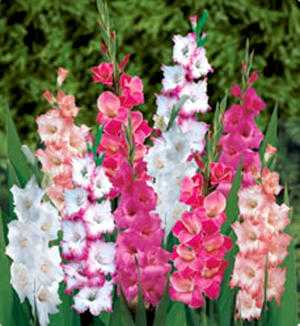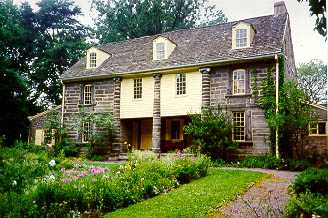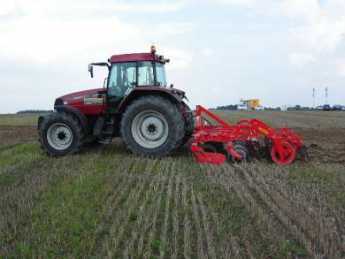Related Topics
Old Age, Re-designed
A grumpy analysis of future trends from a member of the Grumpy Generation.
Gardens Flowers and Horticulture
Gardening, flowers and the Flower Show are central to the social fabric of Philadelphia.
Gardening

|
| Charles Burpee |
The late Charles Burpee had a little speech he made everywhere he got a chance. "If you want to be happy for a day," he said, "Get drunk." If you want to be happy for a month, get married. But if you want to be happy for a lifetime -- get a garden." A lot of people who were born and bred in condos think Burpee must have been a little strange, but even they often tend house plants and window boxes.
 Gardening not only takes time, it takes time during the day. 
|
Gardening may be fun, but it takes time. It particularly takes time during daylight without rain, which is in much shorter supply during short springtime days, and equally short days in the harvest season. In fact, the most critical part of home gardening is to do your planting and weeding and harvesting at just the right time. It's useful to have neighbors who will tell you what grows well in the neighborhood, and where to buy plants and fertilizers. After that, most amateur gardeners are good to go, once they buy a gardening how-to book. Long ago, one other way to improve your garden was to send some daughters to Shipley School, which always dominated the prizes at the Philadelphia Flower Show. However, Shipley has since gone co-ed, and there may have been many other changes.
So, being retired makes gardening possible for people who like it well enough, but never found time at the right season. It's one of the reasons to be reluctant to sell your house which is now too big for you when you retire. Now, at last, you can get things mulched and composted and planted and fertilized and pruned. Especially pruning. There is a tendency in suburban living to plant a lot of bushes and groundcover, and then forget them for twenty years. After a while, the house disappears in the bushes and the whole place looks as though it had been abandoned. It can take two years of pruning and fertilizing to get the place salable; and when you get it salable, you start to lose your interest in selling it. You begin to suspect your neighbors have been prodded into competitive gardening; mustn't let them show you up. Real estate agents who have become unexpectedly friendly tell you neighborhood house prices are holding up nicely. Not now, go away.

|
| Gladiolus |
A few miles further out from suburbia, in exurbia, notice that farmers seldom bother much with landscaping and flower gardening. A former patient of mine once plowed up half an acre and planted gladioli. And then he sold the cut gladioli to a local florist. Houses in the suburbs have foundation planting, azalea usually and rhodedendron right next to the house. Farmers may have just as nice a masonry house, but the lawn grows right up to the foundation wall of the house. Sometimes there is a flowering shrub standing lonesome on the property, usually not even that. If you spend all day every day in the agriculture business, you lose your interest in flower gardens as a hobby. But notice where that has never been true, in Tidewater Virginia and the rest of the deep South. It's not politically correct to say so, but slavery had its advantages for the owners. Once you go beyond having foundation plantings and a kitchen garden, you probably have to have some hired help to garden in a notable way. It's been a help to have power mowers and clippers, fertilizer spreaders and underground sprinkling systems; they just about balance out the loss of gardening assistance from working wives, and the extra time spent commuting extra miles. If a property has been neglected for decades, it's almost a necessity to hire professional help for one or two years to get it into shape. After the work is reduced to maintenance and tinkering, one retired person can handle it with pleasure. If you have kind friends and neighbors, you will learn from them about the choicer seed and plant catalogs, especially those who deliver their plants at just the right time in the season.
Some people prefer vegetables and spices. Tomatoes are a favorite place to begin, and cucumbers. Woodruff is nice as a ground cover and turns cheap white wine into May wine. Scallions and basil are nice. But if you are really serious about vegetables you will elevate the beds a foot above the ground, and it starts to look a little tacky. A compost heap, on the other hand, is unobtrusive and can be made quite elegant. One neighbor boasted he was going to hold cocktail parties in his compost heap.

|
| John Bartram's farm and garden |
Given the chance, it's worthwhile to tour the various show gardens and arboretums in the Philadelphia neighborhoods. John Bartram's farm and garden is right in the center of the city, the way it always has been for the last three hundred years. Bartram hiked all over colonial America, collecting strange plants and flowers for resale. But most of his business was not in Philadelphia or even in America, it was in England. He had a close friend, Peter Collison, who acted as marketing agent if not business partner in Great Britain, where gardening became a major occupation of the great landed estates that American tourists now take such trouble to visit. Obviously, quite obviously, it takes staff to keep such places up. Retirement communities can do the same in a communal way if they could only get themselves pulled together.

|
| Farming |
The subject of tomatoes is a sad one for the Garden State. Because of its sandy soil, southern New Jersey is especially favorable for tomatoes, and cranberries, and peas and beans. New Jersey was once a great truck farm state. Fifty years ago, Campbell Soup would bring in vast heaps of tomatoes to the soup factory in Camden, and they were very good tomatoes indeed. The tomato plants would boom continuously all summer, and vast hordes of tomato pickers would continuously harvest the crop until the first hard frost. However, a new breed of tomato plant was developed, which bloomed and ripened all at once. That was very suitable for mechanical tomato-pickers to harvest, human pickers were no longer needed to tell ripe ones from green ones. So the tomato industry picked up and moved to California, where they can grow three crops a year, harvest them with machines, and improve the bottom line for Campbell Soup. Cranberries went the other way, into the pine barrens, and one family the Haines organized a farmers cooperative called Ocean Spray which bought up almost all of the suitable bogs. Even the Journal of the American Medical Association will attest to the merit of cranberry juice for kidney infections, to the point where it has become a little hard to find cranberries in berry form for Thanksgiving and Christmas. Further south in New Jersey, the canneries organized the local farmers into growing a lot of one kind of vegetable for canning purposes. In the 1920s, however, one Frank Birdseye learned about the value of quick freezing from the Esquimos, and after applying it first to frozen fish, extended it into the various vegetables formerly organized around canning companies. You can now drive for miles past vegetable farms, without seeing a farmhouse. Quakers catch on quick; the same is true in Chester County, Pennsylvania, where the Brock family holds sway.
REFERENCES
| The Pine Barrens: John McPhee: ISBN-13: 978-0374514426 | Amazon |
Originally published: Saturday, June 27, 2009; most-recently modified: Monday, May 20, 2019